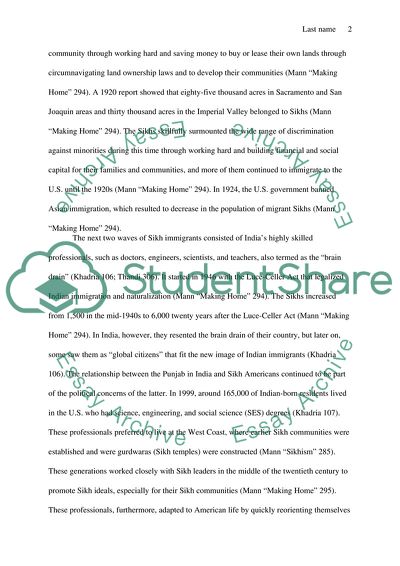Cite this document
(Sikhs in the U.S.: From Discrimination to Struggles for Equality and Acceptance Literature review Example | Topics and Well Written Essays - 3500 words, n.d.)
Sikhs in the U.S.: From Discrimination to Struggles for Equality and Acceptance Literature review Example | Topics and Well Written Essays - 3500 words. https://studentshare.org/religion-and-theology/1811413-research-paper-sikhs
Sikhs in the U.S.: From Discrimination to Struggles for Equality and Acceptance Literature review Example | Topics and Well Written Essays - 3500 words. https://studentshare.org/religion-and-theology/1811413-research-paper-sikhs
(Sikhs in the U.S.: From Discrimination to Struggles for Equality and Acceptance Literature Review Example | Topics and Well Written Essays - 3500 Words)
Sikhs in the U.S.: From Discrimination to Struggles for Equality and Acceptance Literature Review Example | Topics and Well Written Essays - 3500 Words. https://studentshare.org/religion-and-theology/1811413-research-paper-sikhs.
Sikhs in the U.S.: From Discrimination to Struggles for Equality and Acceptance Literature Review Example | Topics and Well Written Essays - 3500 Words. https://studentshare.org/religion-and-theology/1811413-research-paper-sikhs.
“Sikhs in the U.S.: From Discrimination to Struggles for Equality and Acceptance Literature Review Example | Topics and Well Written Essays - 3500 Words”. https://studentshare.org/religion-and-theology/1811413-research-paper-sikhs.


